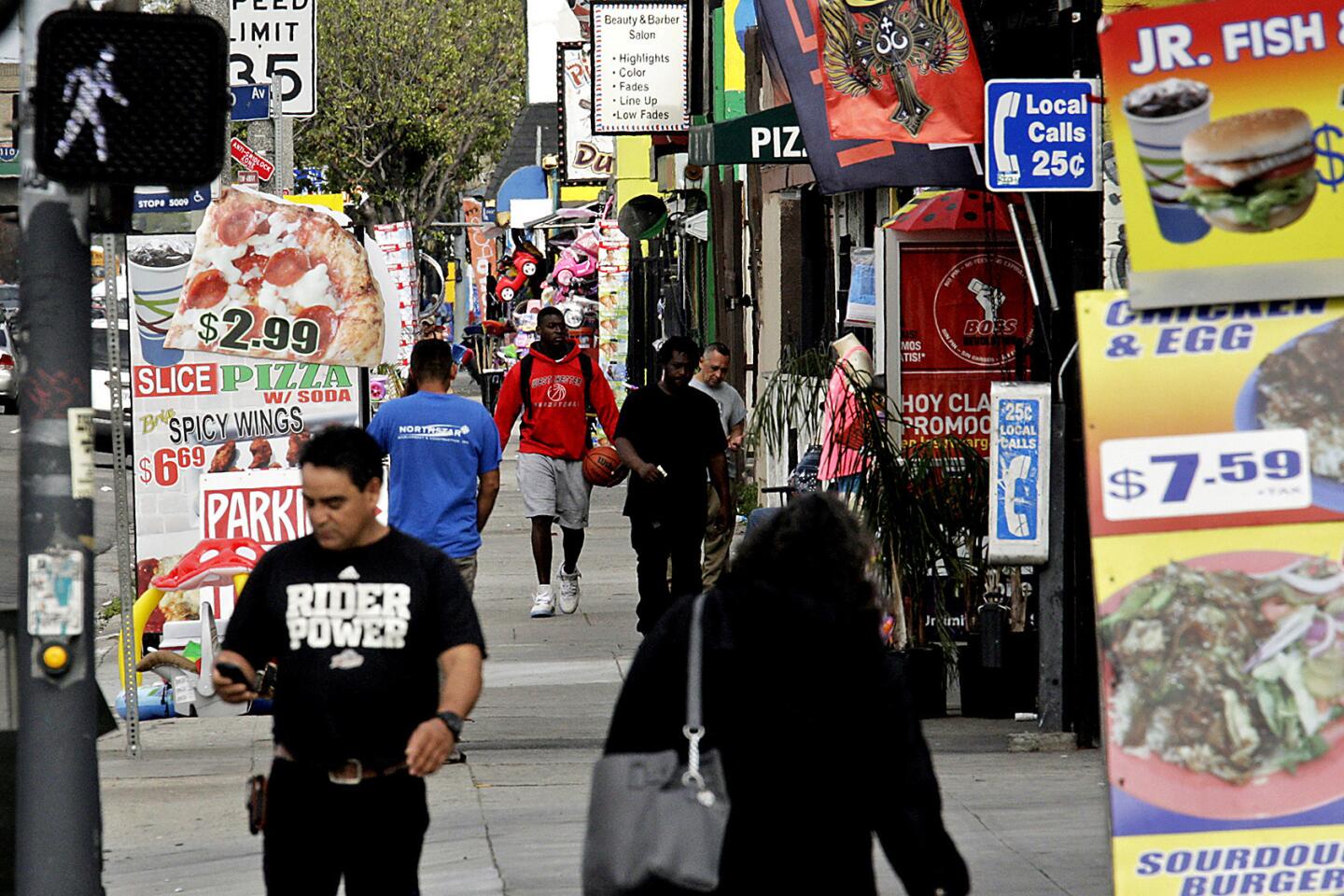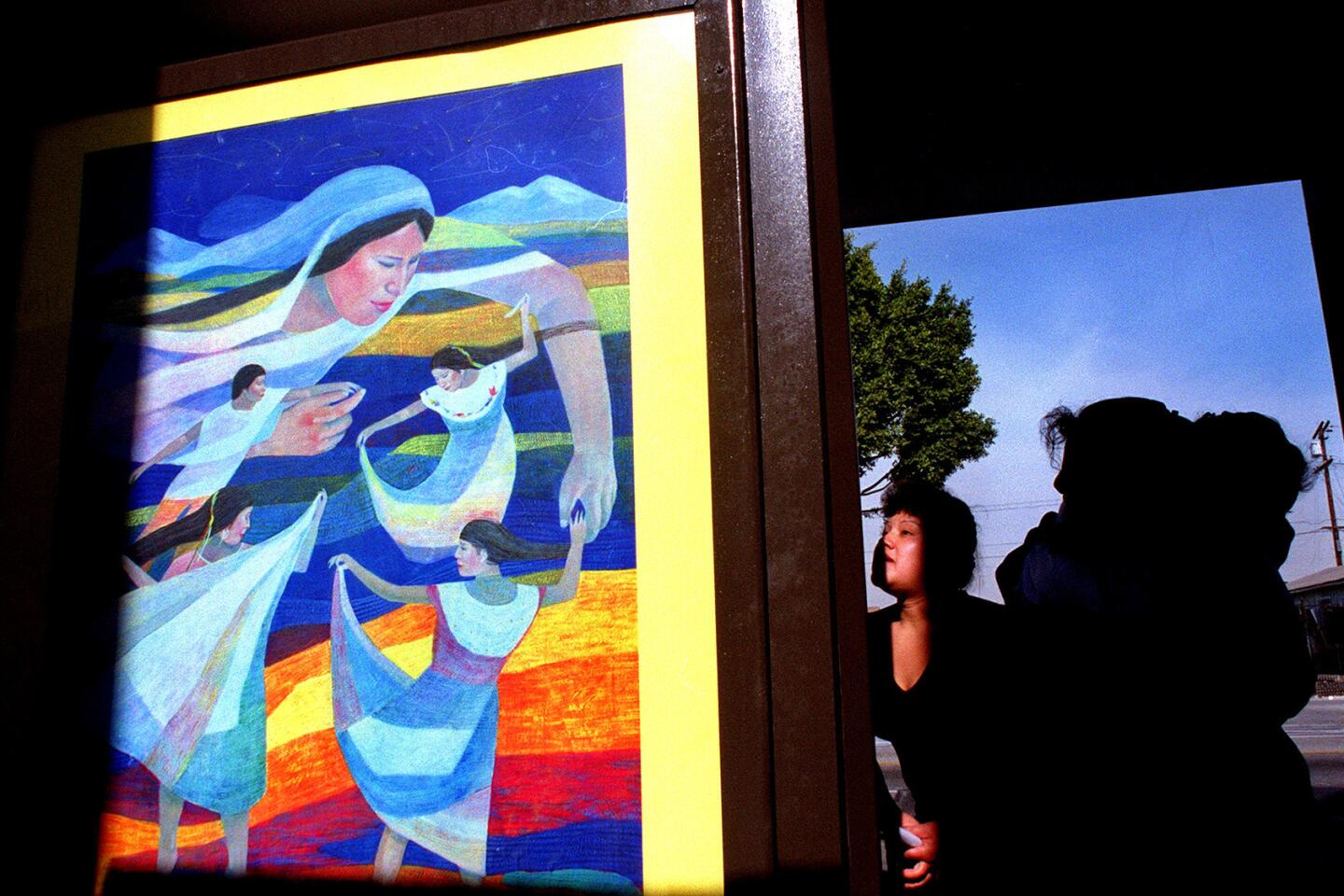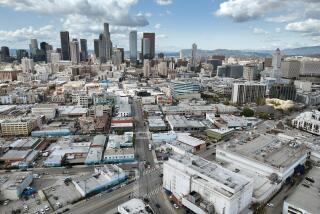Neighborhood Spotlight: Working-class Florence is an affordable rung on the American-dream ladder
As the city of Los Angeles grew southward in the early 20th century, residential developers were not the only ones who found the flatlands south of downtown an attractive location.
Cheap land, with easy access to the tangle of rail lines that fanned out from L.A. to crisscross the Western U.S., made the southeast corner of the city a prime spot for industrial concerns looking to expand.
South Central Avenue in particular became a hotbed of manufacturing and warehousing, especially after the Goodyear Rubber Co. opened a massive tire factory between Gage and Florence avenues in 1919.
The 74-acre plant, which was the first of its kind on the West Coast, was a self-sufficient complex that at its peak employed 2,500 workers who produced up to 15,000 tires a day. There was even a hangar for the Goodyear blimp on the grounds.
The factory supplied the entire Western U.S. and helped fuel the rise of automobile manufacturing in Los Angeles County, which at one time was second only to Detroit in the number of cars that rolled off assembly lines from Van Nuys to Vernon.
With the boom in tire and automotive jobs came the need for housing for the workers who toiled on the factory floors.
Goodyear itself even got into the act of providing affordable housing for its workers, commissioning Sumner Hunt, architect of the Bradbury Building and other prominent L.A. landmarks, to design a neighborhood on 80 acres along 59th Place, just a few blocks from the plant.
Dubbed Goodyear Gardens, the neighborhood as designed consisted of small homes — each with its own garden and garage — in a variety of styles. Although the Gardens was never fully built out, the template proved popular and was replicated by other developers that purchased Goodyear’s surplus surrounding land to build worker housing.
The neighborhood, which came to be known as Florence, continued to function as a factory town within the city for the next several decades, until the Goodyear plant closed for good in 1979. The loss of the relatively high-paying union jobs that the plant had provided for generations of Angelenos led to local economic dislocation that still lingers to the present.

Neighborhood highlights
Homes within reach: Florence’s housing stock remains relatively affordable, especially for working-class residents who work in the area’s warehouses or furniture outlets.
Quick commute: With its proximity to downtown, USC and the gateway cities, Florence is a relatively easy commute to many of South L.A.’s employment centers.
A gateway neighborhood: Like many other working-class neighborhoods in L.A., Florence is an accessible rung on the ladder to the American dream for immigrants from across Latin America.
Neighborhood challenge
Public safety: Florence residents suffer from a high rate of violent crime, with the neighborhood ranked as the 11th-most violent in the city by incidences per 10,000 people.
Expert insight
“This neighborhood is one of the densest in all of Los Angeles, which affects the types of construction going up,” said Carlos Rodriguez, who has been selling homes in Florence for 12 years. “These are small homes built on small lots; you won’t find much over 2,000 square feet.”
He said that although the neighborhood has experienced its fair share of crime, such factors as central location and cheap housing have contributed to the consistent — albeit slow — growth over the last decade.
“The gentrification growing out of downtown hasn’t really affected Florence yet, so as of now, a strong sense of community exists here,” Rodriguez said.
Market snapshot
In the 90001 ZIP Code, based on 12 sales, the median sales price for single-family homes in September was $328,000, up 29.7% year over year, according to CoreLogic.
Report card
There are 11 public schools within the Florence boundaries. Highlights include Florence Avenue Elementary, which scored 824 in the 2013 Academic Performance Index, and Ninety-Second Street Elementary, which scored 809.
Lillian Street Elementary and Russell Elementary scored 767 and 759, respectively, while Parmelee Avenue Elementary scored 747.
Times staff writer Jack Flemming contributed to this report.
MORE FROM HOT PROPERTY
Comedian Kathy Griffin unloads her Hollywood Hills home for $4.49 million
Beverly Hills penthouse once owned by Ellen DeGeneres is ready for a new host
Temecula compound built for ‘Odd Couple’ actor Jack Klugman seeks $5.8 million
More to Read
Sign up for Essential California
The most important California stories and recommendations in your inbox every morning.
You may occasionally receive promotional content from the Los Angeles Times.









